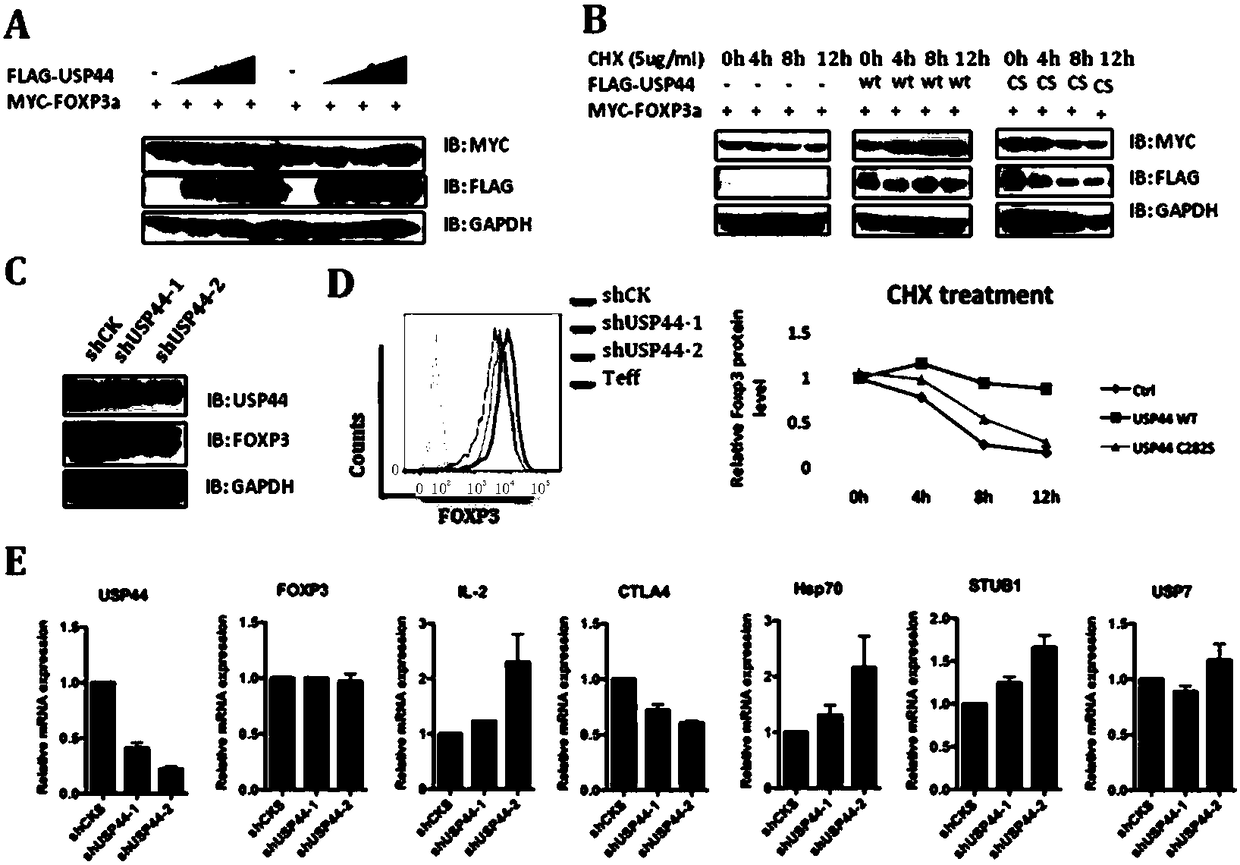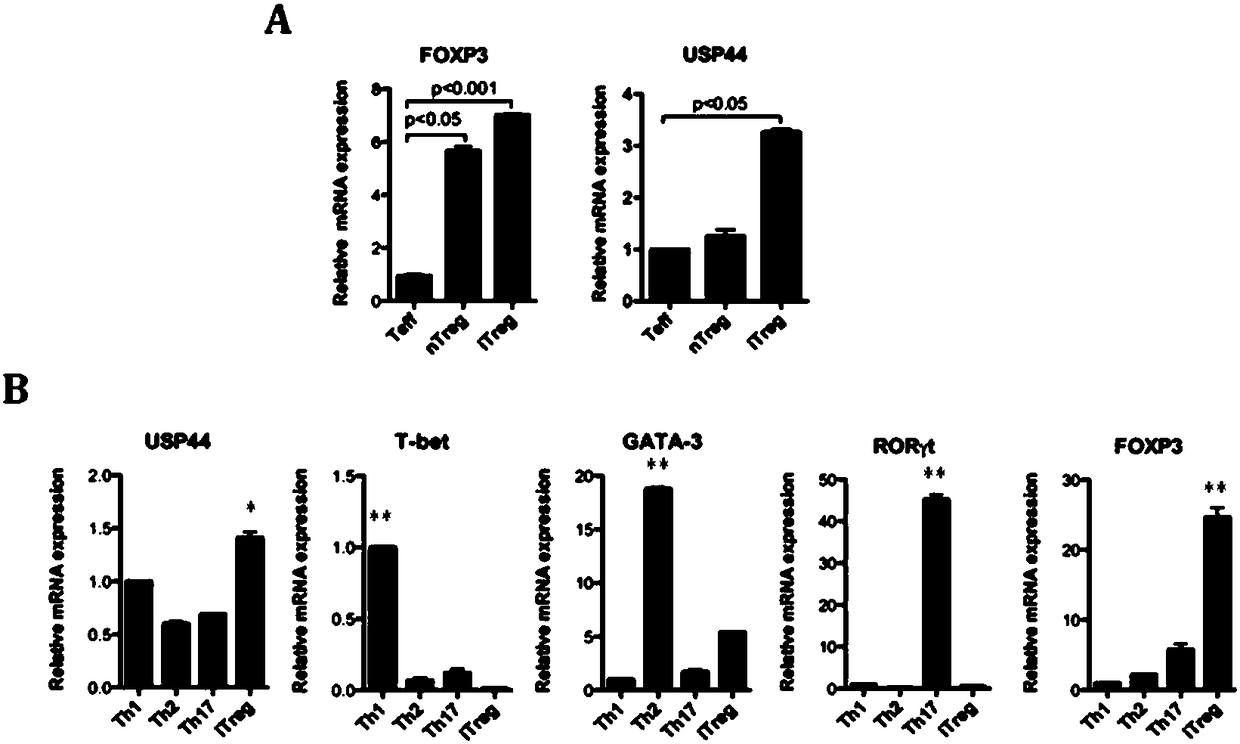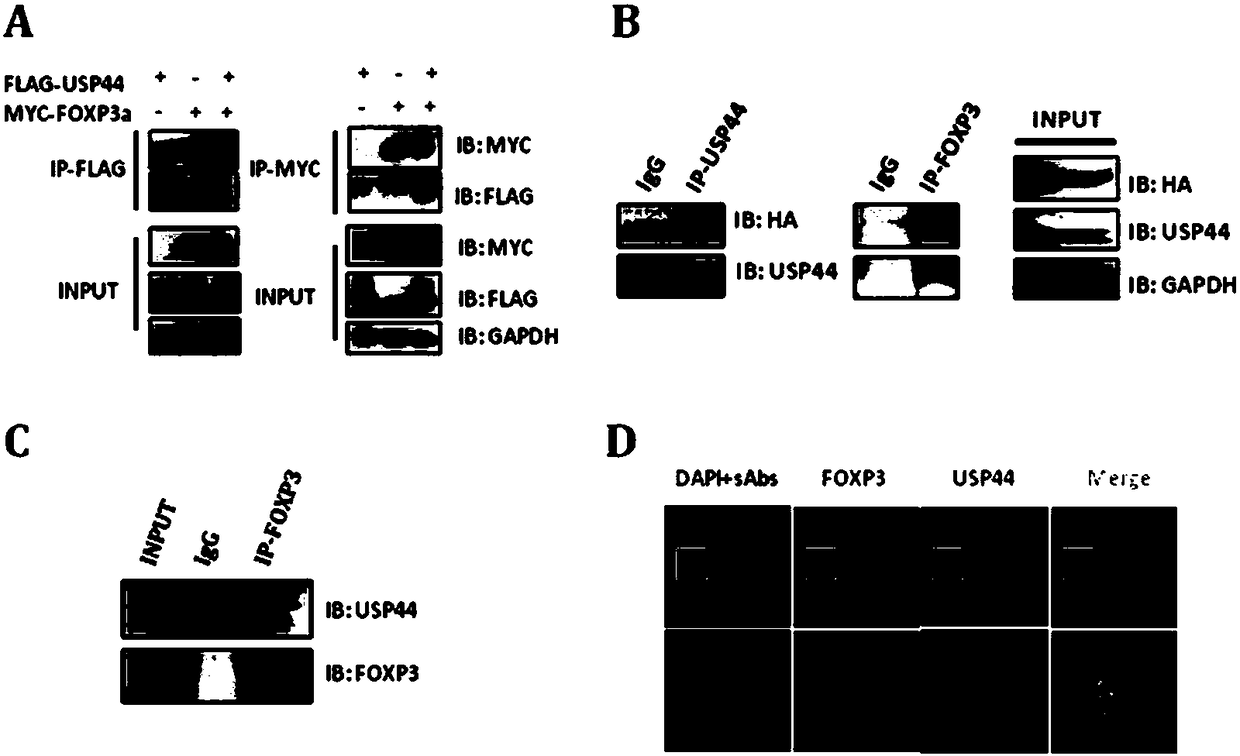Application of ubiquitination pathway related factor in regulating and controlling functions of regulatory T cell
A regulatory and deubiquitinating enzyme technology, applied in the field of molecular biology and biomedicine, can solve the problems of unclear research on inducible regulatory T cells
- Summary
- Abstract
- Description
- Claims
- Application Information
AI Technical Summary
Problems solved by technology
Method used
Image
Examples
Embodiment 1
[0256] Example 1, USP44 is specifically highly expressed in iTreg
[0257] The present inventors first performed flow cytometric antibody staining on peripheral blood mononuclear cells (PBMC) isolated from human peripheral blood (healthy people unless otherwise specified), and then used flow cytometry (FACS) to obtain Naive T cells were isolated from PBMC ( T), effector T cells (Teff) and nTreg, induced in vitro T to make it differentiate into iTreg, lyse the cells and extract RNA for real-time fluorescent quantitative PCR (Quantitative Real-time PCR, qRT-PCR) to detect the expression of related genes, the results showed that USP44 was specifically highly expressed in iTreg ( figure 1 A). Different T helper cell (Th) subsets (Th1, Th2, Th17) and iTreg were induced and differentiated in vitro, and qRT-PCR was also performed, which also proved that USP44 was specifically highly expressed in iTreg ( figure 1 B). It shows that the expression of USP44 and FOXP3 in iTreg is ...
Embodiment 2
[0258] Example 2, USP44 interacts with FOXP3
[0259] Since USP44 and FOXP3 are synergistically up-regulated in iTreg, the inventors hypothesized that the two may have some kind of interaction. In order to verify whether USP44 acts on FOXP3 and is related to its function, the inventor designed an experiment to verify the interaction between the two. First, FLAG-USP44 and MYC-FOXP3 were expressed in HEK293T cells, and the two-way co-immunoprecipitation and protein immunoblotting experiments were performed, and the results showed that the two could interact in the transfection system ( figure 2 A). Then the Jurkat T cells stably expressing HA-FOXP3 were collected, and two-way co-immunoprecipitation and protein immunoblotting were performed with the corresponding antibody, and the results showed that the two could also interact in the stable cell line ( figure 2B). Then isolated from human peripheral blood PBMC T cells were induced to differentiate into iTreg in vitro, co...
Embodiment 3
[0260] Example 3, USP44 stabilizes FOXP3 protein
[0261] In order to understand the effect of USP44 on the protein of FOXP3, the inventors first co-expressed MYC-FOXP3 and FLAG-USP44 in an overexpression system (the dose was gradually increased by 0.5, 1, 1.5 μg), and performed western blotting with the corresponding anti-tag antibody Experiments, the results show that USP44 can stabilize FOXP3 protein, and has a dose-dependent ( image 3 A). Since USP44 has deubiquitinase activity, in order to verify whether its stability to FOXP3 protein is related to its deubiquitinase activity, the inventors constructed a USP44 enzyme inactivation mutant (C282S) and designed a protein synthesis inhibitor Cycloheximide CHX treatment (0, 4, 8, 12h) experiments, the results showed that co-expression of wild-type (WT) USP44 can significantly prolong the half-life of FOXP3 protein, while the enzyme inactivation mutation C282S significantly reduced this effect, which shows that USP44 The ef...
PUM
 Login to View More
Login to View More Abstract
Description
Claims
Application Information
 Login to View More
Login to View More - R&D
- Intellectual Property
- Life Sciences
- Materials
- Tech Scout
- Unparalleled Data Quality
- Higher Quality Content
- 60% Fewer Hallucinations
Browse by: Latest US Patents, China's latest patents, Technical Efficacy Thesaurus, Application Domain, Technology Topic, Popular Technical Reports.
© 2025 PatSnap. All rights reserved.Legal|Privacy policy|Modern Slavery Act Transparency Statement|Sitemap|About US| Contact US: help@patsnap.com



